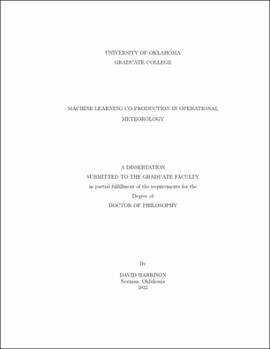| dc.description.abstract | Machine learning, deep learning, and other artificial intelligence (AI) methods are becoming popular tools within the meteorological research community. However, despite the breadth of promising AI research and its increasing adoption within operational agencies, expert forecasters are often hesitant to fully embrace this relatively new technology. Operational forecasters have a practiced, expert insight into weather analysis and forecasting but typically lack the time, resources, or guidance for formal research and development due to the daily demands of their jobs. Conversely, many researchers have the resources, theoretical knowledge, and formal experience to solve complex meteorological challenges but may lack a full understanding of operation procedures, needs, requirements, and authority necessary to effectively bridge the research to operations (R2O) gap. To address these challenges and attempt to improve the R2O success of AI-derived products, this research investigates how operational forecasters evaluate new forecast guidance and how their perspectives about the R2O process differ from those of the research community. The results from these investigations are then used to derive a collaborative co-production framework intended to optimize the R2O process while improving researcher-forecaster communication throughout the development cycle. Finally, the benefit of this collaborative co-production framework is demonstrated by applying modern AI techniques in tandem with the expert knowledge of Storm Prediction Center forecasters to develop two new forecast products designed to predict lightning hazards and emulate county-based Severe Thunderstorm and Tornado Watches that dynamically evolve with the predicted time and location of the severe weather threat. | en_US |
